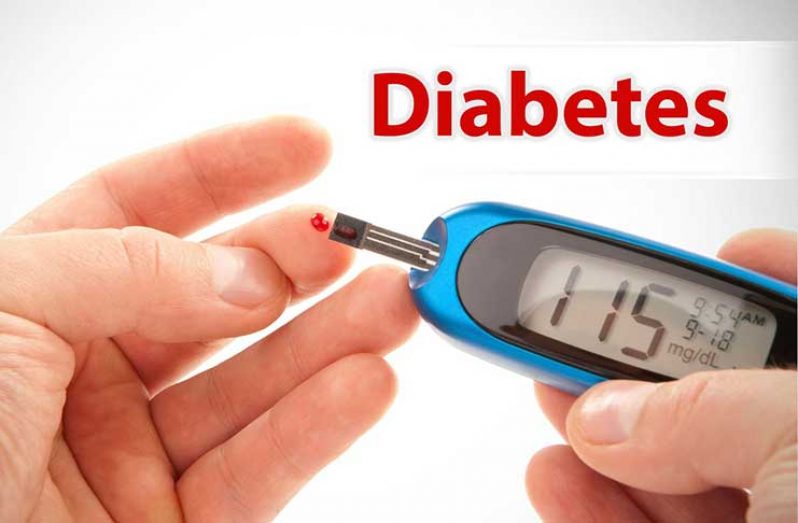SOME 70 percent of the country’s diabetic youth population between the ages of two months and 24 years is found in Regions Three, Four and Six, the Ministry of Public Health has said.
Of the 68 diabetic youth patients registered under the Ministry of Public Health’s ‘Sponsor the Child Initiative’, 48 are from those three areas with 16 from Region Three; 18 from Region Four and 14 from Region Six.
From this national figure too, Regions Two (Pomeroon/Supenaam), Five (Mahaica/Berbice) and Ten (Upper Demerara/Upper/Upper Berbice) account for some 24 per cent of the patients with seven, five and four patients respectively.
Region Seven (Cuyuni/Mazaruni), with four patients, account for the remaining six per cent of the diabetic patients.
Dr Kavita Singh, head of the MOPH Chronic Disease Unit (CDU) said Monday that the absence of diabetic youths in Regions One (Barima/Waini), Eight (Potaro/Siparuni) and Nine (Upper Takutu/Upper Essequibo) could be attributed to a “lack of diagnostic tools” in these interior locations. She said too that an Australian non-governmental organisation (NGO), Life for Child, has promised support in this area to Guyana for 2018.
Dr Singh made the disclosure while discussing plans for the eight annual camp for diabetic youths to be held at the Splashmins ECO Adventure and Camping Park on the Linden/Soesdyke Highway. Senior MOPH executives are slated to address the youths at the opening ceremony today. The camp for diabetic youths was first held here in 2010.
There are 68 Type 1 diabetic youths from two to 24 years old currently registered from the yearly MOPH event, Dr Singh said Monday. Singh said those registered under the ‘Sponsor the Child Initiative’ “are not indicative of the national situation,” since some diagnoses are still missed by health professionals.”
The Public Health Ministry is currently developing a tool to increase accuracy in spotting diabetic youths, Singh said. In addition, many diabetic youths in the private sector are not accounted for in the national statistics for the subsector.Type 1 diabetic patients were born with the disease, with symptoms which include frequent thirst, hunger, regular urination and loss of weight, with between 0.3 and 0.5 per cent of the Guyanese youth population has the medical problem.
‘Sponsor the Chid Initiative’ is an annual gathering of diabetic youths to have their medical condition examined by a trained specialist and to receive their medical supplies, which include strips, ‘prep’ pads, lancets, glucometer and dispensing pens among other key items.
“The youths are well taken care of,” Dr Singh said, adding that the annual budget for the annual exercise has swelled from $4M in 2014 to $24M last year due to an almost doubling of the diabetic population since the programme commenced.
While Singh is overjoyed that prospects are great for care of current and future diabetic youths, she is outraged that some parents and family members of the youthful diabetic patients either sell their medical supplies or, those who are themselves diabetics, use the children’s medication on themselves. In addition, sometimes, there are difficulties in the distributing process experienced by the pharmacies at hospitals in 10 Regions.



.jpg)








